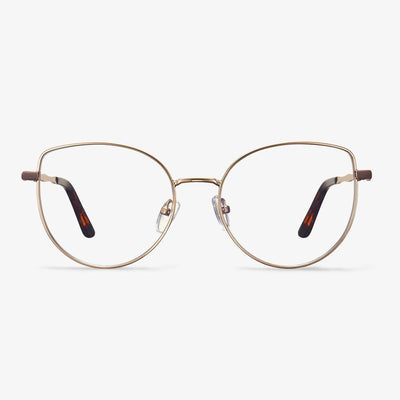The lenses of prescription glasses
Common materials for lenses include glass, resin, and PC. The glass is fragile and heavy, and few people wear it anymore. PC film is tough and not fragile, but it is not resistant to high temperature and the surface is easily scratched. The most common type of lens on the market today is the resin lens, which is light in weight, hard to break, and reasonable in price. At present, it is generally recommended that you choose resin sheets, and it is recommended that people with ultra-high myopia choose glass sheets.
Generally, lenses can be divided into spherical and aspherical surfaces according to different curvature designs. When choosing, refer to the degree of the eye. For people with lower degrees, There are fewer differences between the two shapes. For people with moderate to high myopia, aspherical lenses will have better imaging effects and clearer vision.
When choosing a lens, a parameter that is often mentioned is the refractive index. Common refractive indexes are 1.56, 1.60, 1.67, and 1.74. With the same degree, the higher the refractive index, the thinner the lens.
Eye problems that may occur while driving.
Visual fatigue and xerophthalmia: when driving, the spirit and eyes are in a highly tense state, reducing the blink of an eye, which will easily cause eye fatigue and xerophthalmia. Flash glare -- car headlights and city light pollution -- can cause serious damage to the eyes. UV damage: UV radiation is strong when driving in the daytime, especially in the plateau and snow weather. Nocturnal myopia: nocturnal light is insufficient, so it can make the eye pupil dilate, causing nocturnal vision to drop influence driving safety.
Design principle of aspheric lens
Early optical lenses use spherical lenses. Because the glasses were small round frames, the problem of lens edge aberration was not paid attention to. It wasn't until large frames became popular that the problem became apparent. For the spherical lenses, aberration cannot be corrected with the combined lens. Only a few variables of the lens can be found to reduce aberration and improve clarity. Aspheric lenses are designed to reduce the aberration of optical correction lenses and to make lenses flatter and reduce lens magnification. We can get clearer, thinner, lighter-quality lenses. Thus, aspheric lenses are used to reduce aberration and astigmatism to a minimum, close to the natural vision of the naked eye. The spherical aberration can be reduced by changing the curvature of the edge. The refraction in the central region is high and decreases evenly toward the edges.
The Disadvantages of Polycarbonate Lens
In this section, we will show you the disadvantages of polycarbonate glasses.
First, the polycarbonate lens is expensive than other regular lenses. It can cost up to double the price of regular eyeglasses.
Second, compared with high-index lenses, polycarbonate glasses have a lower abbe value, which is used to measure the dispersion of light for different eyeglasses lens materials. Polycarbonate lens rates lower mean they have the potential to cause slight chromatic aberrations in your peripheral vision.
Third, compared with Trivex lens, polycarbonate lens has bad durability since they are thinner and lighter.
Why do spectacle frames rust?
Before solving this problem, we can first understand the causes of rust spots on the frames and skin allergies due to rust spots. Many alloy products in daily life contain nickel, and direct contact with the skin will cause allergies to sensitive people. The temples and nose pads are the parts that contact the skin with a large area, especially the outer surface of the metal frame and the interior of metal containing a large amount of nickel. Through contact with the skin and erosion of sweat, the appearance of rust spots and skin allergies are caused. Once allergy occurs, it will cause contact dermatitides such as redness, swelling, itching, and yellow water on the surrounding skin.
Types of Adjustable Glasses
Adjustable glasses come in different types including adjustable reading glasses, adjustable focus glasses and adjustable focus reading glasses.
Adjustable reading glasses have an adjustable focal length and compensate for refractive errors. They provide variable focusing so you can adjustable them for desired distance and prescription. They are often used for reading because you do not need to adjust the position of your eyes.
Adjustable focus glasses offer an adjustable focal length. They are used to correct refractive errors including presbyopia. They provide variable focusing so as to adjust the glasses for seeing things close up or far away.
Adjustable focus reading glasses are the same as adjustable reading glasses. You can adjust the dials of the glasses so you do not need to reposition your eyes to see objects clearly in the near or far.
There are many types of bifocals.
According to the manufacturing means, bifocals can be divided into separate bifocals, gluing bifocals, fusion bifocals, E-type bifocals, or one-line bifocals. The separation one is a simple type of bifocal lens. Two lenses of different strength were used to make it be in the center of the distal and proximal vision areas.











































